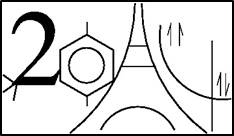The diacetyl:(water)n=1,12 complexes have been studied using ab initio and DFT methods with Pople and correlation consistent basis set. Two 1:1 conformers have been calculated at the Coupled-cluster (CCSD(T)-F12/Aug-cc-pVDZ) level. The binding energy of both complexes lies around 28 kJ/mol. From the topological point of view, both conformers present a direct (HO)H---O(C) hydrogen bonding between the water molecule and carbonyl oxygen and also a secondary link between the C-H bond of methyl group and water oxygen lone pair.
Taking the geometrical and energetic results obtained with CCSD(T)-F12/Aug-cc-pVDZ as reference data, we were able to calibrate the most suitable density functional to study these types of hydrogen-bonded complexes. Over several available density functional, it has been shown that two functional families are the best for our study: the range-separated hybrid (RSH) functionals and the double-hybrid (DH) functionals. Nevertheless, it should be noted that the RSH functional calculations are less demanding than the functional DH. This advantage is especially important in studies of the first hydration shell of the central diacetyl molecule where twelve water molecules form a ring around it.
At each step of addition of H2O, topological analysis - ELF (Electron Localization Function) and AIM (Atoms in Molecules) - of the different hydrogen bonding sites is performed, to provide a chemical description for the hydrated network growth. The topological analysis rationalizes and complements the cooperative effect during the formation of the first solvation shell.
- Autre

 PDF version
PDF version

